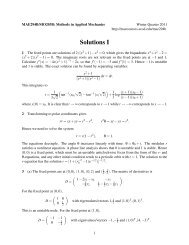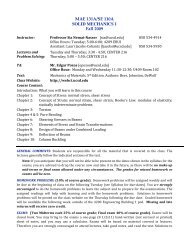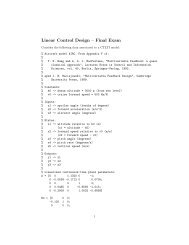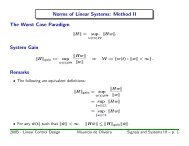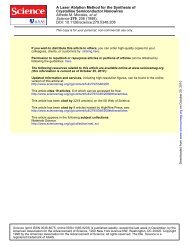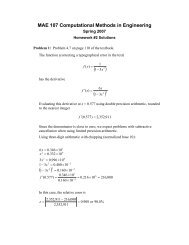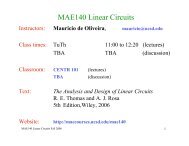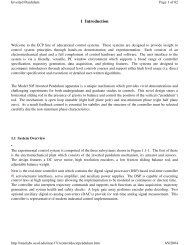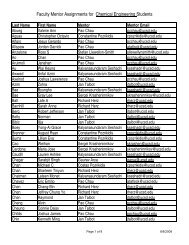solution
solution
solution
Create successful ePaper yourself
Turn your PDF publications into a flip-book with our unique Google optimized e-Paper software.
square wave signal 2 () x t looks like:<br />
x 2 (t)<br />
1<br />
0.5<br />
0<br />
-0.5<br />
-3 -2 -1 0 1 2 3<br />
x 10 -5<br />
-1<br />
t<br />
How to get this square wave signal? It’s just from a similar and basic function 3 () x t ,<br />
as shown below. Then x2() t = x3() t × 2− 1.<br />
x 3 (t)<br />
1<br />
0.5<br />
-3 -2 -1 0 1 2 3<br />
x 10 -5<br />
0<br />
t<br />
The expression for this x3 () t is just a convolution of a rectangle function and<br />
impulse train:<br />
⎛ t ⎞<br />
x3() t = rect ⎜ δ 5 5 () t 21/10 × 1/10<br />
⎟∗<br />
⎝ ⎠<br />
⎛ t ⎞<br />
x () 2 x () t − 1= 2rect ∗ () t − 1<br />
⎝1/10 ⎠<br />
⇒ 2 t = 3 ⎜ δ 5 ⎟<br />
5 21/10 ×<br />
6 ⎛ ⎛ t ⎞<br />
⎞<br />
xt () = x1() t x2() t = sin(2× 10 πt) ×⎜2rect ⎜ 5 δ 5 () t 1<br />
21/10 × ⎟<br />
1/10<br />
⎟∗<br />
−<br />
⎝ ⎝ ⎠<br />
⎠<br />
1<br />
From Fourier Series Pairs table, with T 0 = 2× 5<br />
10<br />
,<br />
1<br />
rectangular function is T = 5<br />
10<br />
,<br />
ω π<br />
5<br />
0 = × 10 , width of



